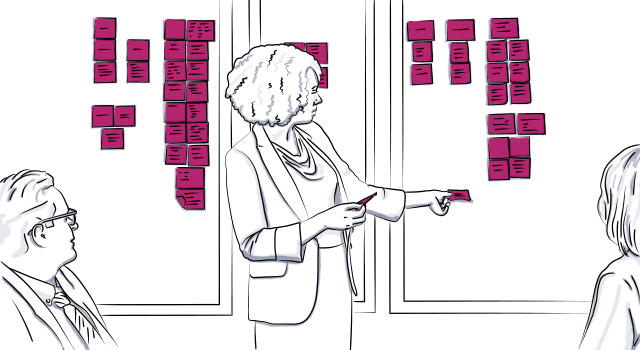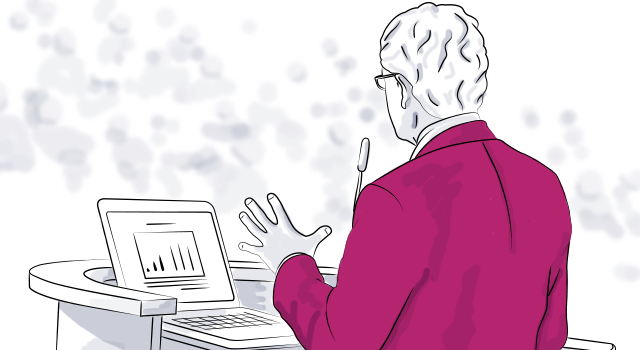
4 Ways to Create the Best Event Agenda (& Examples!)
More than ever before, guests are searching for more than just a traditional meeting ” they want personalized event experiences that will engage them on multiple levels. Not only that: attendees want choices, and to be a part of meetings that benefit not only their specific goals as professionals, but also add value to their lives in a more holistic sense. So much so that 80% of meeting planners report their jobs involve more experience creation than they did just two to five years ago.
Today, the best events are those that attendees feel they have to Tweet or post on Instagram about, and the success of an event lies largely on whether or not they deem it worthy to share. The question is, how can planners create these types of attendee experiences?
Personalized event agendas and experiences take priority.

Driven by millennials ” the generation whose options are endless and often available from a mere swipe on a touchscreen ” attendees also want some element of control. Control over meeting formats continues to shift from the hands of the organizer to those of the attendees, so planners are pushed to create more personalized experiences that reach beyond a linear concept or agenda.
Multiple, customizable, and interactive options for event-goers is key. As such, event planners need to stay on top of rapidly changing event trends, incorporate more attendee-specific elements into events, crowdsource feedback, and adjust agendas in real time.
With personalization, comes complexity.
While it’s easy to decide on adding more personalized elements to a given event, it’s a whole different story when it comes to bringing those elements to life. Carrying out a more imaginative, attendee-focused event means more moving parts and more planning as a whole.
So while personalization is a must in today’s event climate, improving the efficiency of the planning process is just as important when it comes to the viability of creating these types of experiences. That’s where event technology comes in. Using the right event planning software, planners can increase attendance by 20%, increase productivity by 27%, and decrease costs 20-30% ” a must for ideas like the four below.
Use these 4 ideas to create an engaging, more personalized event agenda:

1. Make your event agenda holistic.
In this information-saturated age, people are becoming increasingly aware of their specific needs on all levels: from their physical health, to their mental and emotional wellbeing, to their overall work-life balance. Guests want event concepts that matter to their unique selves, which means planners and venues have to focus on accommodating for each individual, creating personally fulfilling experiences that cater to all of these layered needs.
This is what the industry means when they throw around the idea of “purposeful meetings.” Coined by Janet Sperstad in her much-celebrated white paper, Purposeful Meetings: How to Plan With Deeper Meaning, Innovation and Insight in Mind, the concept has now become the driving force behind successful meetings. So much so that the idea was the theme of IMEX America 2017, arguably the pinnacle of events for the industry at large.
While the concept may seem abstract at times, it really boils down to this quote from Sperstad herself: Think beyond T-shirts, lanyards, places, and spaces”to people.
For example: How Dreamforce Makes Holistic Happen
Dreamforce’s focus on attendees’ inner (and outer) wellbeing is ahead of the game, forging new pathways for event ideas that engage attendees. The annual user conference in San Francisco brings together industry pioneers, thought leaders, and IT professionals from all over the world ” all with an experiential spin on the traditional conference format. Having realized the more holistic needs of the growing numbers of millennial attendees, Dreamforce now focuses on more than just business and networking.
For starters, they incorporate guided meditation to help everyone involved stay centered and at peace throughout events. Why? Because they understand that a happy attendee is a more engaged attendee. To do so, they partner with organizations like Plum Village Monastics and Wisdom Labs to add mindfulness sessions to their events that align with the goals of the conference as a whole. Some examples of these types of mindfulness sessions include Leadership Builder, Learning to Listen, and Igniting Creativity.
[Tweet “Event planning software can increase productivity by 27%.”]
2. Put the event agenda in the hands of attendees.
One strong way to to personalize the event agenda for attendees is to give them control over it. New live polling apps make crowdsourcing the event agenda faster than ever, even though it does mean more work up front for event planners, who have to prepare for multiple scenarios as a result.
Guests can be polled before, during, and after events, and just the mere act of polling attendees can communicate a sense of involvement and agency that increases attendee engagement. Such live polling technology allows guests to engage on their smartphones and shape their own experiences, driving added interest through inclusion and participation.
Prediction: In the future, as algorithms become more advanced, they’ll be able to suggest options based on previous ratings and attendance history, giving event teams a viable option beyond just live polling.
For example: Open 2017 uses live polling to engage and delight attendees.
At Open 2017, organizers used an app to let delegates offer suggestions about sessions they wanted to see, and then gave them the opportunity to vote on them. This allowed attendees to have the influence they craved over the meeting content in real time: truly the essence of personalized event agendas in action.
While the team at Open 2017 knew that their audience was eclectic, they were still amazed to see the variety of subjects that the audience wanted to discuss. The result? The event acquired twice as many speakers and opened itself up to a variety of pitches that never would have made it in had it not been for their unique commitment to crowdsourcing.
Hint: Using these types of technologies will require easy access to fast WiFi, so make sure your venue can handle the extra bandwidth.

3. Create attendee personas to cater to the unique preferences of individuals.
We’ve talked about the importance of personalizing events and making sure your guests’ individual needs are being met at a holistic level. But the real question is, where does one even begin? One such way to cater to attendee engagement is by creating persona buckets that map back to the various high-level personality types that attendees might share.
By segmenting the audience in this way, events are able to offer specific opportunities and agendas that will meet those individuals’ wide-ranging desires, from the food and beverage offering to networking opportunities and post-event activities. By bucketing, organizers can be prepared for as many outcomes as possible (which, yes, add more work pre-event in the form of surveys and the like), while ultimately creating a much more personalized experience.
For example: Experient uses a portfolio of personas to create totally unique experiences.
Experient helps event planners design and execute incredible industry events and has been at it for over 45 years. In that time, they’ve created a portfolio of 20+ event personas that make it easier for planners to anticipate, visualize, and align with guest motivations and behaviors.
At a recent conference, they created journey maps, which outlined a totally unique experience for each persona they expected to appear at the meeting. Each map highlighted different specific elements each day of the conference that personalized the event at every stage.
For example, two of the personas they identified for their conference were the Be-Wellster and the Post-Master. For Be-Wellsters, those guests who might want a holistic, health-focused experience, the organizers planned a morning run, a yoga with dolphins experience, healthy meals, and meditation. Meanwhile, for the Instagram-savvy Post-Masters, people who are extremely active sharing experiences on social media, the event planners organized recommendations for the best local entertainment and set up idyllic backdrops for photo-ops.
4. Make one space feel like many unique spaces during your event agenda.
Designing the perfect event space is key, especially when you’re aiming to create the most customizable, adaptable, and unique experience possible. While attendees are looking for more control over their schedules, planners can easily meet this need by offering a wide variety of content and interaction at different locations both in and around the venue.
Sure, multiple breakout spaces aren’t always an option, but that doesn’t mean events can’t diversify a single space in ways that give attendees options. Many venues have the options of portable walls, which means, with a little bit of imagination and decor variation, planners can create what feels like a space within a space.
To make it successful, planners should:
- Collaborate with the venue through the planning process to leverage their knowledge of the space and its inherent possibilities.
- Diagram the setup visually to ensure that it will work in the space(s). (This also gives setups a helpful resource to refer to, ensuring smooth execution leading up to the event.)
Event technology like Social Tables’ Planner Tools allows planners to accomplish both of these things in a single, user-friendly platform.
For example: IMEX uses their space to create smaller stations and provide attendees options.
IMEX is widely known for their smaller, themed stations that give attendees choices and allow them to engage with the content and learning formats that interest them most. Some of these stations include Campfires, where small groups could interact with speakers and each other in an intimate, camp-like setting, and a Lunchtime Live Zone, where live entertainment like VR and slow-motion booths provide a fun mental break from larger sessions. Meanwhile, the Research Pod allows industry experts to engage with the latest tech trends, and the Play Room provides ample exposure to the latest tools in experiential learning.
For guests that need a moment to breathe, IMEX America 2017 featured the Hilton-sponsored “Be Well Lounge,” where guests could get massages or partake in guided meditation. Guests seek out these types of spaces to “unplug” at these types of events, which can be overstimulating and oversaturated with technology.
For example: C2 Montreal lets attendees choose their own adventure.
C2 Montreal is arguably the strongest example out there of a conference that’s really leaning into the experience creation trend. In 2018, guests were offered smoothie shots at the rotating event entrance, entertained by Cirque du Soleil performers, had food trucks of all cuisine types to choose from, gelato delivered on Vespas, and so much more.
Some creative spaces they used included a rotating bistro serving coffee and private meeting cabins for Braindates. Networking spaces like these private cabins and hanging trapeze chairs for meetings ultimately led to over 3,000 face-to-face meetings being scheduled through the duration of the event.
You’re Ready to Create a Great Personalized Event Agenda.
We hope these ideas for personalizing events will help you plan more engaging, creative events in the future. After all, as the needs and wants of attendees evolving, so too must events.
Luckily, there are plenty of event planning resources that are evolving right alongside of events, helping planners turn their visions for those events into engaging, innovative realities. But one thing’s for certain: Now more than ever, creativity is the key to event success.
Up next, discover unique gala ideas, and how to crowdsource content for any event.


